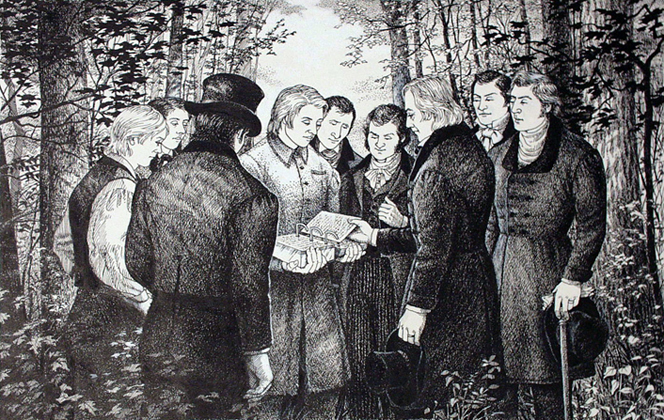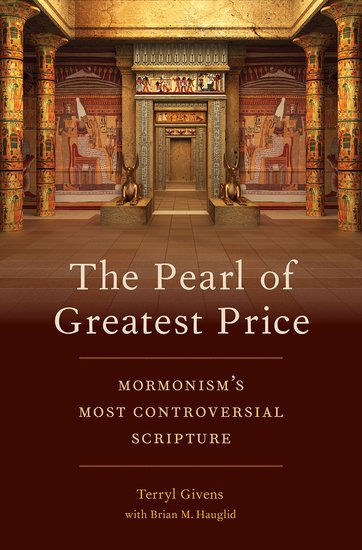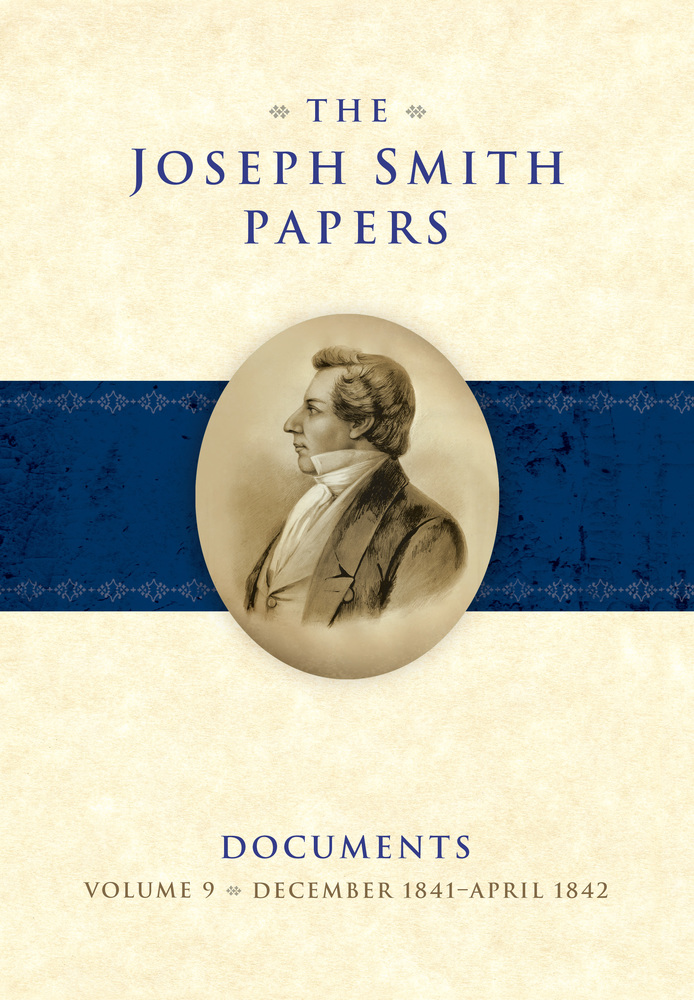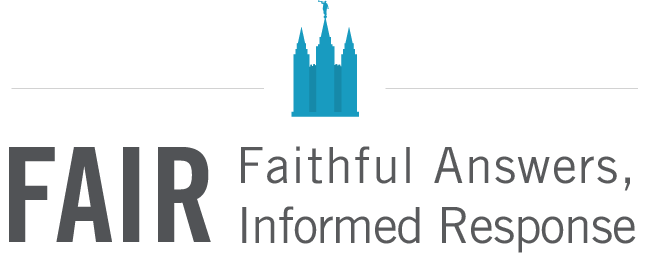
This is a little late, but it came to me while sitting in Gospel Doctrine today that we have had several good FairMormon Conference presentations over the years that go along with today’s lesson. Perhaps they can still be of benefit to someone in their personal study. Here are the ones that came to mind:
- In 2004, the late historian Richard Lloyd Anderson gave a talk about the Book of Mormon witnesses, entitled “Explaining Away the Book of Mormon Witnesses.”
- In 2017, Keith Erekson, who is the director of the Church History Library, talked about “Witnessing the Book of Mormon: The Testimonies of Three, Eight, and Millions.”
- And in 2019, Daniel Peterson spoke about the little known women who were also witnesses of the Book of Mormon as part of his presentation on “‘Idle Tales’? The Witness of Women.”

 Angela Hallstrom works for the Church History Department as a writer and literary editor for the four-volume history of the Church, Saints: The Story of the Church of Jesus Christ in the Latter Days. Prior to her work for the Church History Department, she taught writing at the University of Wisconsin-River Falls. She received an MFA in creative writing from Hamline University and is the author of the novel Bound on Earth, editor of the short fiction collection Dispensation: Latter-day Fiction, and has served on the editorial boards of BYU Studies, Irreantum, and Segullah. She and her husband are the parents of four children, and recently moved back to Utah after spending sixteen years in Minnesota.
Angela Hallstrom works for the Church History Department as a writer and literary editor for the four-volume history of the Church, Saints: The Story of the Church of Jesus Christ in the Latter Days. Prior to her work for the Church History Department, she taught writing at the University of Wisconsin-River Falls. She received an MFA in creative writing from Hamline University and is the author of the novel Bound on Earth, editor of the short fiction collection Dispensation: Latter-day Fiction, and has served on the editorial boards of BYU Studies, Irreantum, and Segullah. She and her husband are the parents of four children, and recently moved back to Utah after spending sixteen years in Minnesota. Ben Spackman did ten years of undergraduate (BYU) and graduate work in ancient Near Eastern studies and Semitics (University of Chicago) before moving on to general science (City College of New York). Currently a PhD student in History of Christianity at Claremont Graduate University, Ben’s focus is the intertwined histories of religion, science, and scriptural interpretation; most specifically, he studies the intellectual history of fundamentalism, creationism, and religious opposition to evolution in connection with interpretations of Genesis.
Ben Spackman did ten years of undergraduate (BYU) and graduate work in ancient Near Eastern studies and Semitics (University of Chicago) before moving on to general science (City College of New York). Currently a PhD student in History of Christianity at Claremont Graduate University, Ben’s focus is the intertwined histories of religion, science, and scriptural interpretation; most specifically, he studies the intellectual history of fundamentalism, creationism, and religious opposition to evolution in connection with interpretations of Genesis. Richard E. Terry is Professor Emeritus of Soil Science at Brigham Young University. He received his B.S. degree from Brigham Young University in Agronomy and M.S. and Ph.D. degrees from Purdue University in Soil Microbiology and Biochemistry. He was Assistant Professor of Soil Science at the University of Florida, Everglades Experiment Station, from 1977 through 1980. While in Florida he conducted research in the microbial decomposition and subsidence of the organic soils of the Everglades.
Richard E. Terry is Professor Emeritus of Soil Science at Brigham Young University. He received his B.S. degree from Brigham Young University in Agronomy and M.S. and Ph.D. degrees from Purdue University in Soil Microbiology and Biochemistry. He was Assistant Professor of Soil Science at the University of Florida, Everglades Experiment Station, from 1977 through 1980. While in Florida he conducted research in the microbial decomposition and subsidence of the organic soils of the Everglades. A native of southern California, Daniel C. Peterson received a bachelor’s degree in Greek and philosophy from Brigham Young University (BYU) and, after several years of study in Jerusalem and Cairo, earned his Ph.D. in Near Eastern Languages and Cultures from the University of California at Los Angeles (UCLA). Dr. Peterson is a professor of Islamic Studies and Arabic at BYU, where he has taught Arabic language and literature at all levels, Islamic philosophy, Islamic culture and civilization, Islamic religion, the Qur’an, the introductory and senior “capstone” courses for Middle Eastern Studies majors, and various other occasional specialized classes. He is the author of several books and numerous articles on Islamic and Latter-day Saint topics–including a biography entitled Muhammad: Prophet of God (Eerdmans, 2007)—and has lectured across the United States, in Europe, Australia, and New Zealand, and at various Islamic universities in the Near East and Asia. He served in the Switzerland Zürich Mission (1972-1974), and, for approximately eight years, on the Gospel Doctrine writing committee for The Church of Jesus Christ of Latter-day Saints. He also presided for a time as the bishop of a singles ward adjacent to Utah Valley University. Dr. Peterson is married to the former Deborah Stephens, of Lakewood, Colorado, and they are the parents of three sons.
A native of southern California, Daniel C. Peterson received a bachelor’s degree in Greek and philosophy from Brigham Young University (BYU) and, after several years of study in Jerusalem and Cairo, earned his Ph.D. in Near Eastern Languages and Cultures from the University of California at Los Angeles (UCLA). Dr. Peterson is a professor of Islamic Studies and Arabic at BYU, where he has taught Arabic language and literature at all levels, Islamic philosophy, Islamic culture and civilization, Islamic religion, the Qur’an, the introductory and senior “capstone” courses for Middle Eastern Studies majors, and various other occasional specialized classes. He is the author of several books and numerous articles on Islamic and Latter-day Saint topics–including a biography entitled Muhammad: Prophet of God (Eerdmans, 2007)—and has lectured across the United States, in Europe, Australia, and New Zealand, and at various Islamic universities in the Near East and Asia. He served in the Switzerland Zürich Mission (1972-1974), and, for approximately eight years, on the Gospel Doctrine writing committee for The Church of Jesus Christ of Latter-day Saints. He also presided for a time as the bishop of a singles ward adjacent to Utah Valley University. Dr. Peterson is married to the former Deborah Stephens, of Lakewood, Colorado, and they are the parents of three sons. Wendy Ulrich, Ph.D., M.B.A., has been a psychologist in private practice, president of the Association of Mormon Counselors and Psychotherapists, and a visiting professor at Brigham Young University-Provo. She founded Sixteen Stones Center for Growth, which offers seminar-retreats for Latter-day Saint women and their loved ones (see
Wendy Ulrich, Ph.D., M.B.A., has been a psychologist in private practice, president of the Association of Mormon Counselors and Psychotherapists, and a visiting professor at Brigham Young University-Provo. She founded Sixteen Stones Center for Growth, which offers seminar-retreats for Latter-day Saint women and their loved ones (see 

 René Alexander Krywult, a native of Vienna, Austria, Europe, has been a member of FairMormon for over eighteen years and has been instrumental in founding the German-speaking FairMormon group. He is a software developer and project manager for a European financial institution. He is married to Gabriele Krywult, and they have four children and three grandchildren. His first publication was “Mormon Deification Compared to Orthodox Christian Theosis” in the magazine Spirituality in East and West of Dialog Center International, a Protestant network of organizations engaged in researching new religious movements. More articles on the FairMormon website followed. He organized four FairMormon conferences in Germany from 2009 to 2015 and spoke at all of them.
René Alexander Krywult, a native of Vienna, Austria, Europe, has been a member of FairMormon for over eighteen years and has been instrumental in founding the German-speaking FairMormon group. He is a software developer and project manager for a European financial institution. He is married to Gabriele Krywult, and they have four children and three grandchildren. His first publication was “Mormon Deification Compared to Orthodox Christian Theosis” in the magazine Spirituality in East and West of Dialog Center International, a Protestant network of organizations engaged in researching new religious movements. More articles on the FairMormon website followed. He organized four FairMormon conferences in Germany from 2009 to 2015 and spoke at all of them.